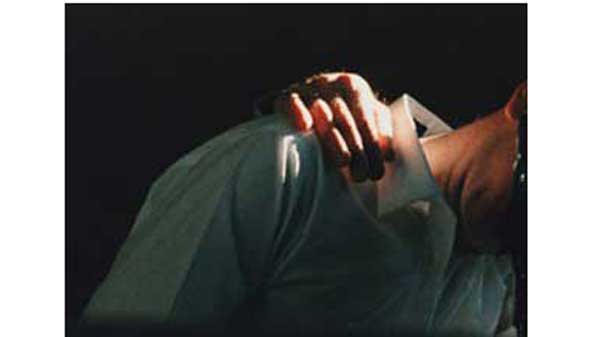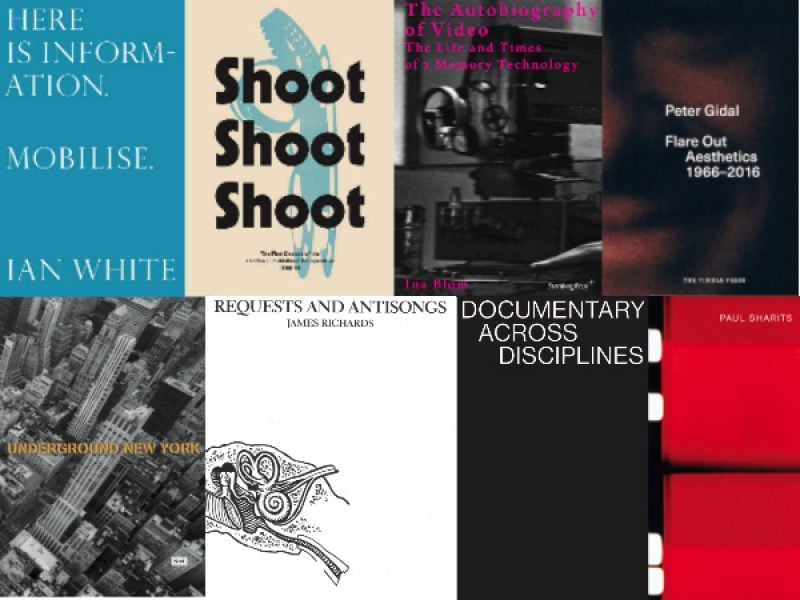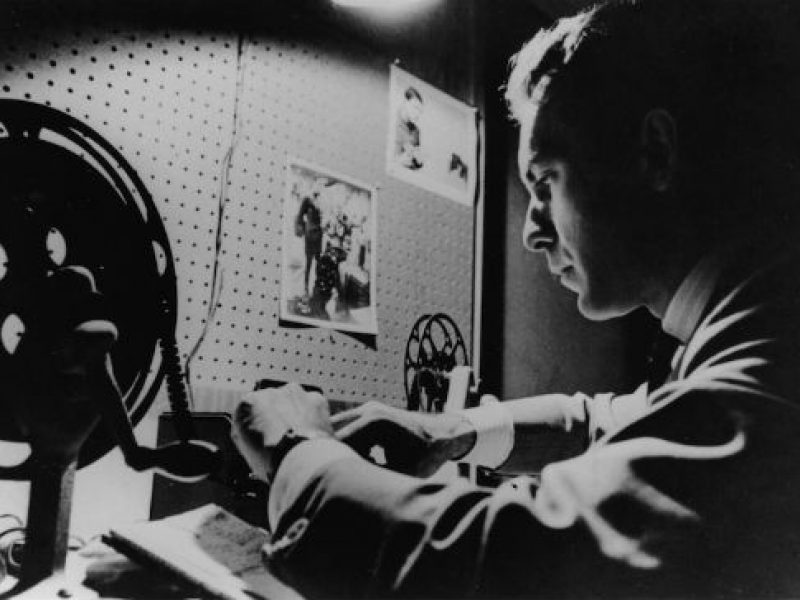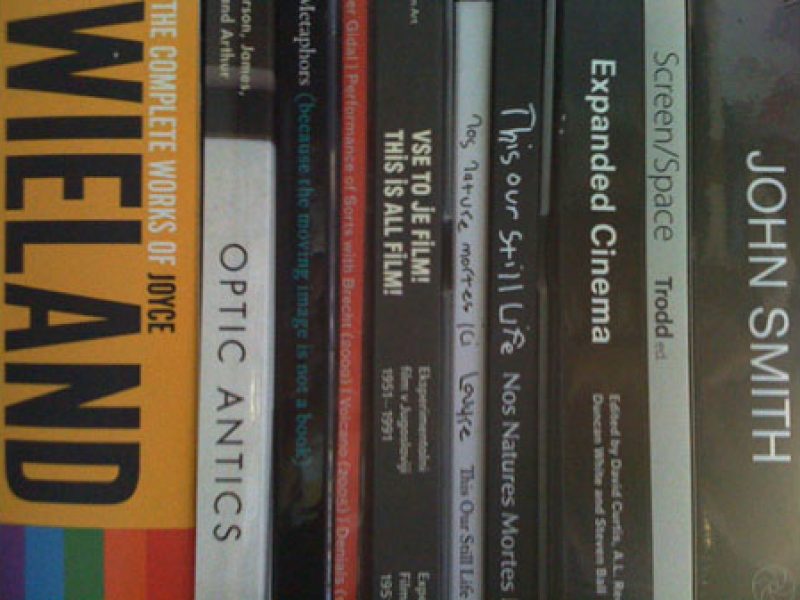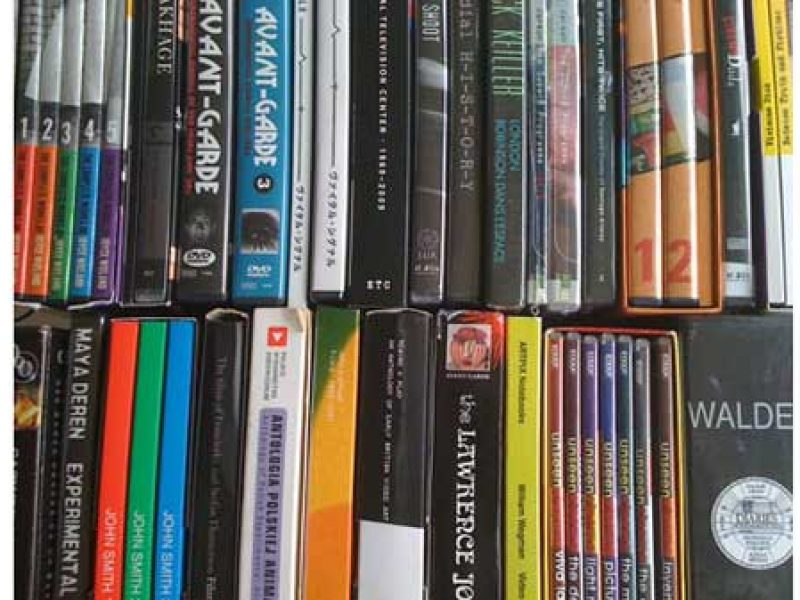As 2010 draws to a close, LUX asked a few artists, curators and writers to pick their favourite film-related work, screening or show of the year.
Rosa Barba (artist, Berlin)

Staten Island (1978), Vivienne Dick
The thing I most enjoyed this year was the weekend with Vivenne Dick in Tate Modern’s Starr Auditorium in September. Experiencing Vivenne Dick’s way of handheld, juddering super 8 filming is like entering mental layers and secret angles of the 70’s inner landscape of New York. Even more, it was like looking at music for me. The whole weekend with the discussions and performances around it made it into a great cinematic event which doesn’t happen so often these days.
Steven Cairns (artist and Co-Editor of MAP, Glasgow)

Waiting for the Wind (1982), James Nares
James Nares’ 8-minute Waiting for the Wind (1982) was a highlight of the 56th Oberhausen International Short Film Festival’s No Wave programme. The precisely edited super-8 work captures the interior of a New York apartment as it is destroyed in a tornado-style-attack with minimalist undertones. His 3-minute, Ramp (1979), also included in the programme, tunes in to similar minimalist inflections, and is most interesting for its affinities with the New York Minimalist scene. John Lurie’s 45-min Men in Orbit (1978) – for which Nares was cinematographer – provided, for those who could endure its loud and distorted soundtrack, a contrast to Nares’ varied, and often overlooked, film practice.
Benjamin Cook (Director, LUX)
Extract from Pulmo Marina (2010), Aurélien Froment
In a very average year of cinema going seeing our own commissioned film Pulmo Marina by Aurélien Froment pop up unannounced in front of a lacklustre feature was a personal highlight. The whole audience captivated and mystified by a mesmeric giant floating jellyfish was a moment of true cinematic bliss .. only to be spoilt moments later by the arrival of that terrible clunker Inception.
Isla Leaver-Yap (curator and writer, New York)

The Hollywood Film (1972-3), John Baldessari
John Baldessari: Movie Scenarios, a screening and artist discussion of films and videos by John Baldessari on 20 November 2010 at Electronic Arts Intermix, New York. Introducing his screening to a packed-out crowd sardined into EAI’s event space, John Baldessari prefaces his Four Short Films with the observation that boredom was ‘in’ at the time he made them. What he doesn’t specify in his preamble, but deftly illustrates in his silent 16mm quartet, is that the primary gesture of boredom is play. The diversions, mediations, and reauthoring of cliché are the comic components of Baldessari’s anti-po-faced actions. And the evening’s event – which presented a rare opportunity to see a wide selection of his lesser-known works, each discussed by the artist in detail – provided a compelling deconstruction of narrative via the unexpected nature of artistic collaboration. His videos made with a precocious former student (titular star of Ed Henderson Reconstructs Movie Scenarios (1973) and Ed Henderson Suggests Sound Tracks for Photographs (1974)) demonstrate the liberating aspects of deferral, while the excellent Script (1974) sets in motion a revealing series of portraits that comprise the re-enactment of movie scenes by various couples who are evidently incapable of acting, but betray much else. Disinterested in the melancholic ruminations of the film form, Baldessari’s screening presented a special and rare old stage magic at the heart of his moving image work, with an intimate artist discussion which was by equal turns frank, generous and playful.
Katrin Mundt (curator, Essen)
For 34 years now the Duisburg Film Week has been the most important forum for documentary film in German language. What distinguishes this festival is not only a high-quality programme but also the discussions following the showing of each film: they are protocolled and published, ultimately allowing the act of speaking about film to shape the rhythm and atmosphere of an entire festival. In this discourse-friendly environment, a beautiful film premiered this November which almost completely eschews speech: Peter Ott’s Gesicht und Antwort (Face and Response), the portrait of a woman in a “low-consciousness state.” In austerely composed, long shots we encounter a protagonist whose every gesture becomes a statement, and who not only holds our gaze but actually seems to respond. Yet this communication is one without reinsurance, with the reciprocal understanding remaining an unconfirmed assumption. A film that radically questions the weight of words.
Grace Ndiritu (artist, London)

King (A Portrait of Michael Jackson) (2005), 16-channel video installation, Candice Breitz
My film highlight of 2010 was being invited to participate in the inaugural show Events of the Self: Portraiture and Social Identity curated by Okwui Enwezor at a new museum in South Germany. The Walter Collection focuses on contemporary African and German Photography with a few video artists like Candace Breitz, Theo Eshetu and myself. The adventure of catching a plane, two trains and a coach to get there was worth it. The opening was held on a hot evening in June on which the international art world gathered for this momentous occasion. The hefty door stop catalogue is a must too.
María Palacios Cruz (curator and writer, Brussels)

Qu’ils reposent en révolte (des figures de guerre) (2010), Sylvain’s George
Many memorable film moments from 2010: the Robert Beavers retrospective at the Austrian Film Museum; the Lewis Klahr screening and q&a at London Film Festival, the screening series programmed by Pere Portabella for the Belgian Cinematek (including, among other works, Iván Zulueta’s Arrebato and Paulino Viota’s Contactos), Morgan Fisher and David Gatten at Courtisane Festival in Gent… and one discovery, Sylvain George’s Qu’ils reposent en révolte (des figures de guerre), seen at FID Marseille. Investigating the situation of illegal immigrants in the Calais area, George’s film succeeds in being at the same time radically engaged, aesthetically challenging and truly moving. A lesson on how to make films politically, of commitment as a filmmaker, a citizen and a human being. Sylvain George will be one of the three Artists in Focus during the next Courtisane Festival (the other two are Robert Beavers and Robert Fenz).
Caterina Riva (co-director FormContent, London))

Girl Chewing Gum (1976), John Smith
This year I am glad to have discovered the psychological complexity of Vivienne Dick’s films and re-discovered John Smith’s Girl Chewing Gum, a work dating back to 1976 but that couldn’t have been more present in 2010’s art discourse. Kudos to Renzo Martens for stirring our drowsy consciences with his controversial Episodes and Phil Collins for unpacking Marxism today at the 6th Berlin Biennale without falling into nostalgia or didacticism. In 2011 I will look out for the new video works of Ed Atkins (UK), Emanuel Almborg (Sweden) and Diego Marcon (Italy).
Mike Sperlinger (Assistant Director, LUX)
Extract from Pink Narcissus (1971), James Bidgood
I’m a bit ashamed not to have seen it before, but the film that made the strongest impression on me this year was definitely James Bidgood’s Pink Narcissus (1971), shown at Tate Modern as part of the excellent Invocations and Evocations: Queer and Surreal season back in March. A completely ravishing, compactly epic feature film made entirely in one New York apartment, the film is a delirious distillation of Hollywood melodrama and outlandish homoerotic fantasy played out in exquisite homemade sets, such as the extraordinary paper-mache urinals. Jonathan Katz gave an excellent intro at Tate, explaining some of the story around the reclusive Bidgood and sensitively interpreting the film’s fervent artificiality. The DVD is available from BFI and I’d strongly recommend it as a stocking filler.
Hito Steyerl (artist, Berlin)

My highlights were: Phil Collins’ show at DAAD Berlin, specifically the work hero; and Chen Chieh-Jen’s solo show at Taipei Fine Arts Museum.
Emily Wardill (artist, London)

Independencia (2009), Raya Martin
I don’t remember if i saw this last year or not, but when i am asked to name films that really impressed me Raya Martin’s Independencia is the one that I think of. Being hopelessly uninformed I was authentically shocked when he got up on stage afterwards and was in his twenties because it looked like the film of a person who had worked out many things slowly and over time. Also Deborah Stratman – I had the pleasure of sitting in her class at the University of Illinois when I went to Chicago this spring. She, Conversations at the Edge and the students at SIAC made Chicago seem even more impressive than it already was – with its stoic, glamorous architecture and cheeky people with interesting questions.
Mark Webber (independent curator and part-time musician, London)

Lethe (2009), Lewis Klahr
Lewis Klahr at Tate Modern, 25 October 2010. Much to our surprise, around the midpoint of Engram Sepals (Melodramas,1994-2000), the audience transcended to an enlightened state. It’s true I was suffering from an intense cold at the time, but others felt it too – during Govinda, the one live action film in the series. From that point on, we were euphoric. Klahr talked us down after the screening, generously offering personal insights that couldn’t otherwise be discerned by the most perceptive of viewers.
Ian White (artist and curator, Berlin)

Yvonne Rainer
Yvonne Rainer’s performances at Tramway were the best works in any medium in any year, ever, but I already blogged about that. Before that time, tears had lit my ears on hearing Adrian Rifkin speak at the first Documentary Forum in the Haus der Kulturen der Welt, Berlin in June. He, Marie-José Mondzain and Eyal Sivan were formulating a reading of Alain Resnais’ Nuit et Brouillard, largely via a discussion of Resnais’ earlier documentaries on artists. Adrian was blisteringly brilliant – mind-spinning, affective, incisive thinking such that seeing the film again there it became more utterly, affectively and intellectually devastating than how I’d known it to be before (and it was already pretty devastating). All you could do afterwards was to cycle home alone, in silence, with broken gears. I haven’t watched the documentation of the event, maybe you had to be there, but you can watch it online.

